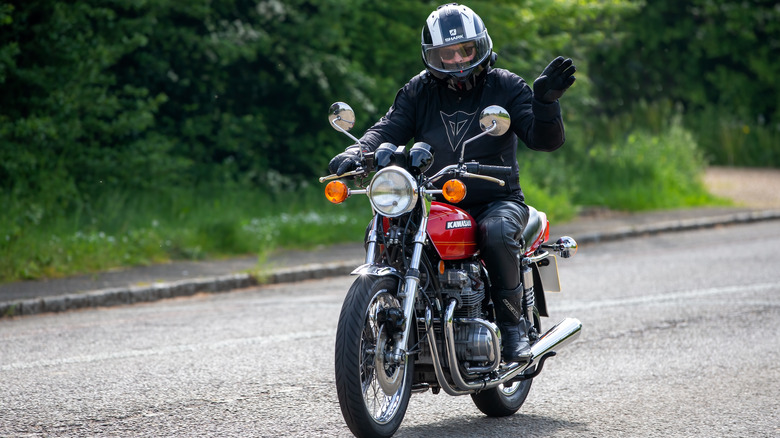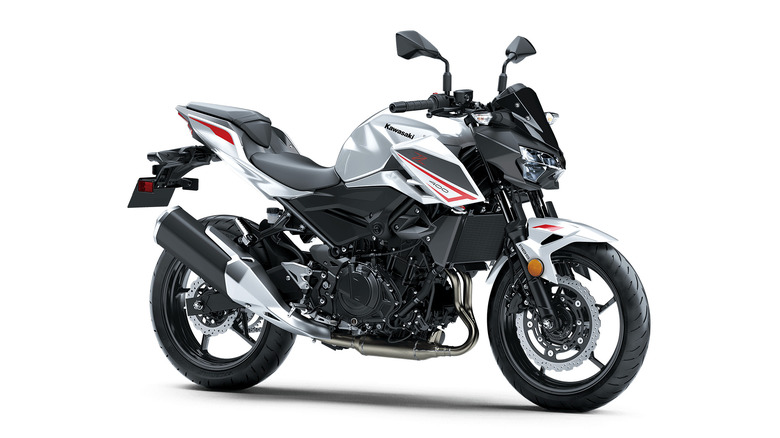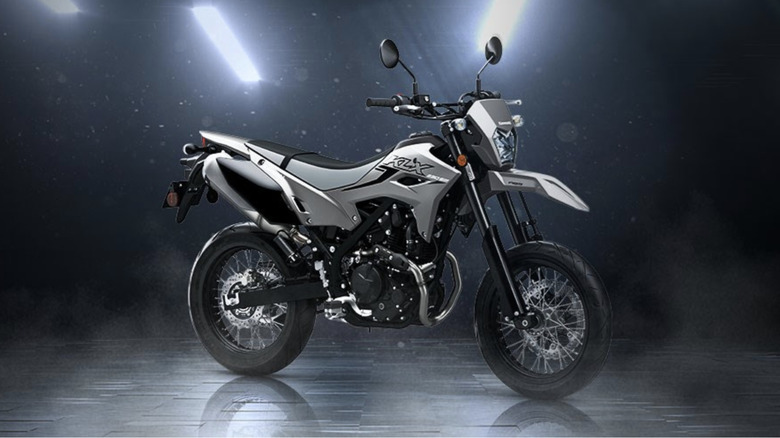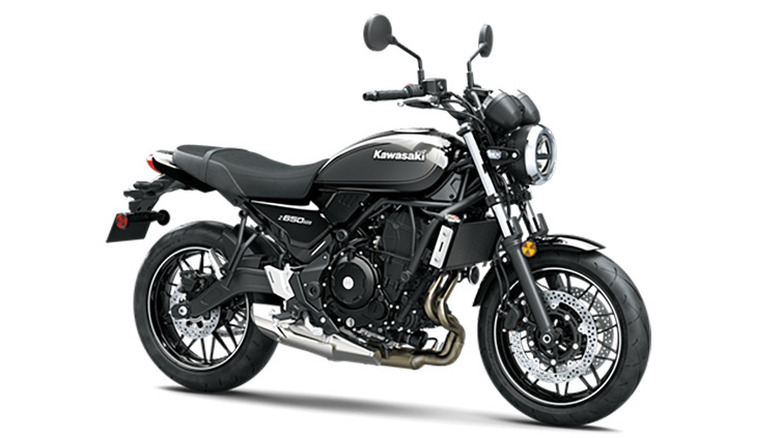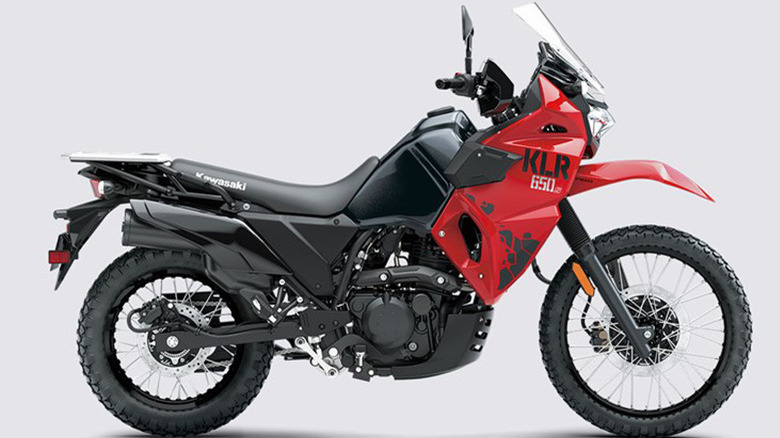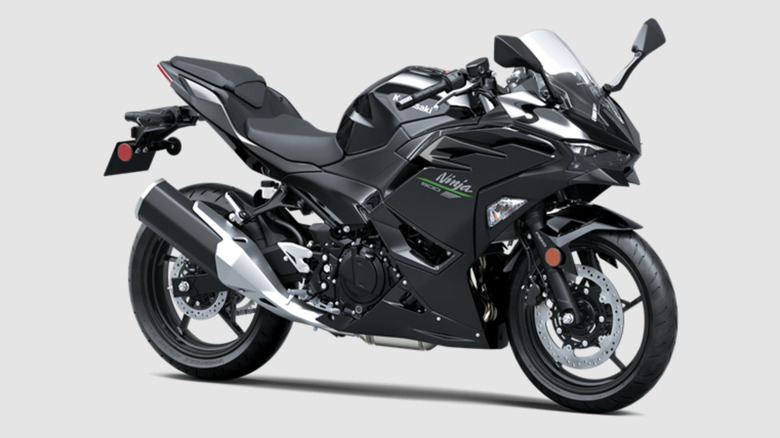5 Kawasaki Motorcycles That Are Cheap And Easy To Maintain
Robert Pirsig's 1974 travelogue "Zen and the art of Motorcycle Maintenance" chronicled a road trip he took in 1968 with his 11-year old son Chris and two friends from Minneapolis to San Francisco and back. Along the way, Pirsig stopped countless times to make small repairs on and adjustments to his bike, using his wrenching as a meditation on quality and self-improvement and a way to bond with his son. In 2019, Pirsig's widow, Wendy, donated his 1966 Honda Super Hawk, tools, and toolboxes to the Smithsonian Institute, and the museum's website noted that his book "tells a story about the relationship between people and machines that made Pirsig a pioneer in the human–technology interface and do-it-yourself maintenance and repair."
The later generation Super Hawk ranks as one SlashGear's most affordable classic Honda bikes, and Honda ranks at the top of our list of the best motorcycle brands of all time. The top four spots were all taken by Japanese manufacturers, including Kawasaki, which placed third. Kawasaki is probably most well-known for its utterly hellacious Ninja series of superbikes, but it dedicates much of its energy to making sure every motorcycle that leaves its factory is subject to the same rigorous quality control as the Ninja H2R, which offers eye-popping performance and stability-enhancing systems like traction, braking, and launch control, but starts at $58,100. Most of Kawasaki's bikes are far less pricey and can be maintained by DIYers like Pirsig.
Here are five Kawasaki models that should fit under your budget leaving ample room for tools and parts.
Z400
The Z400 is a stripped-down supernaked bike, meaning many of the mechanical components are uncovered and easy to access for maintenance and repairs. Kawasaki unveiled the Z400 at the 2018 EICMA Motor Show in Milan, Italy as a successor to the Z300 and a street-friendly stripped-down version of the Ninja 400. The 2024 model is Kawasaki's cheapest full-sized motorcycle with a base price of $5,399, and it has a remarkably easy prescribed maintenance schedule. Oil and filter changes are recommended every year or 7,600 miles and take just a few minutes to do.
Kawasaki sells an oil change kit with three quarts of oil, a filter, washer, funnel, and gloves for $39.99. Lubing and adjusting the chain are also simple jobs that are made easier by the Z400's uncluttered design and can be managed by one person in under 10 minutes. It's a good thing these are easy tasks, as it is recommended to service the chain every few hundred miles.
KLX 230SM
The next stop on Kawasaki's full-sized price sheet at $5,599 is the KLX 230SM, a supermoto-class bike that has a 233cc four-stroke motor, chain drive, and six-speed transmission, and weighs less than 300 pounds, according to the manufacturer's spec sheet. The KLX 230SM has 17-inch wheels with optional ABS, direct fuel injection via a 32 millimeter Keihin throttle body, a telescopic front fork with 8 inches of travel, and an adjustable rear shock with 8.6 inches of travel.
It also features electric start and comes in two colors: battle gray (pictured above) and lime green. It has a steel frame and long, padded one-piece seat that sits 33.3 inches from the road surface. Bruno Maia of Top Speed called the KLX230SM a "light and compliant motorcycle," and added, "It's as simple as they come, easy to service and maintain." For complicated repairs or major mechanical failures, Kawasaki offers its Protection Plus plan with terms of one, two, or three years.
Z650RS
If you're looking for a bike with more power and have a little room to stretch your budget, the Z650RS supernaked offers a 650cc two-cylinder, four-stroke DOHC engine and has a base sticker price of $10,199. Its retro styling is similar to that of the Z900RS, which is modeled after the 1970s Z1 900 and starts at more than $12,000. The engine in the Z650RS still delivers 48.5 pound-feet of torque (via Kawasaki) and the most affordable variant, the Z650 ABS, includes traction control, a back-link rear suspension, and anti-lock disc brakes at both wheels.
The large, round analog gauges complete the retro feel, and the Z650RS requires just a few basic maintenance tasks every 7,500 miles: oil and filter changes, a fresh air filter, and new spark plugs. Every 15,000 miles, the brake fluid should be changed and the valve clearances adjusted, and the chain should be lubed every 400 miles and adjusted every 600 miles. These basic tasks can be completed in less than a half hour, although some owners choose to leave the valve clearance check and adjustment to a professional mechanic.
KLR 650
Another Kawasaki that is manageable for most DIY mechanics is the KLR650, a dual-sport model with a single-cylinder fuel-injected 650cc engine. The KLR650 was introduced in 1987 and updated for the 2008 model year, getting updated brakes and front fork and a newly designed swing arm. The 2024 model starts at $6,899, and choosing anti-lock brakes adds just $300 to that price.
Charles Pennefather of Top Speed included the KLR650 on his list of models appropriate for DIY motorcycle maintenance newbies, noting that "its simplicity will make it very easy for aspiring mechanics to build confidence." He added that he couldn't "think of many other motorcycles that are well suited to someone who is beginning their mechanic career." Much of that simplicity can be attributed to the KLR650's one-cylinder engine, which produces a respectable 39.1 pound-feet of torque, according to the manufacturer's website. Adventure Rider called it the "Swiss Army Knife of motorcycles." It pointed out how the 21-inch front wheel was able to pull riders over uneven terrain with little effort, and the "toolbox sits cleverly where you do not have to pull the seat off to reach it."
Ninja 500
The Ninja H2R's near-$60,000 price tag and racing-spec design excludes it from this list, but the current Ninja line includes a range of more affordable, simpler machines like the Ninja 500. The base model of the Ninja 500 starts at $5,299 and has a four-cylinder parallel twin 451cc engine that puts out 51 horsepower and 31.7 pound-feet of torque, according to Kawasaki's website. It replaced the Ninja 400 for the 2024 model year and has a redesigned front end and new brake master cylinder for the front wheel. The 7,500-mile service on the Ninja 500 includes oil, filter, spark plug, and coolant changes and a valve adjustment.
The Ninja 500's service isn't quite as simple as most of the other bikes on this list due to the comparatively robust body and fairing pieces that need to be removed to access the chain and engine. One job that is easier on the Ninja 500 than it is on most Kawasaki motorcycles is the valve clearance adjustment, thanks to the locknut and adjustment screw design. Top Speed's Andra Delmonico cited the Ninja's ease of maintenance as one of the factors that make it a great bike for beginners, writing that its "simple design and engineering make it easier for beginners to learn about their bike, how it operates, and how to care for it."
